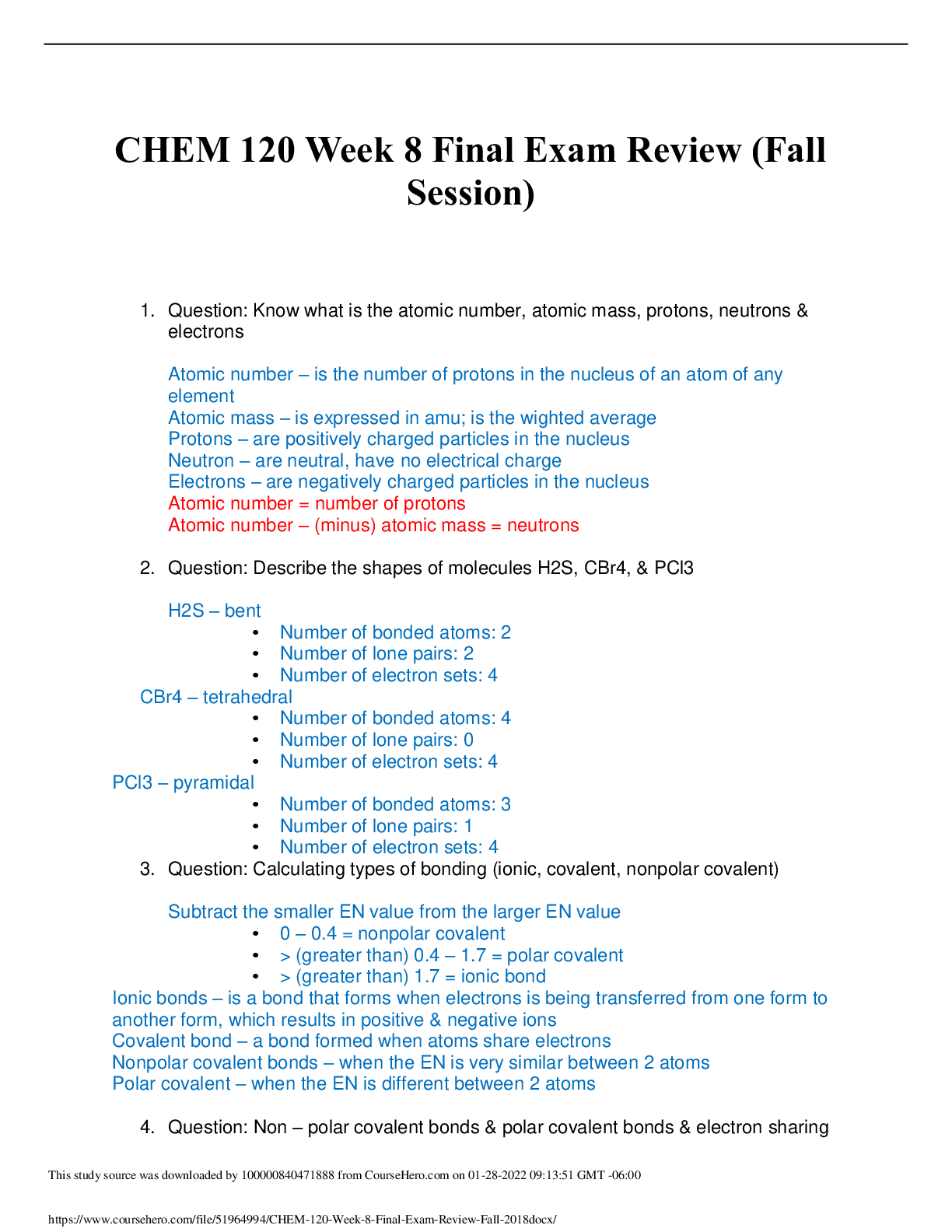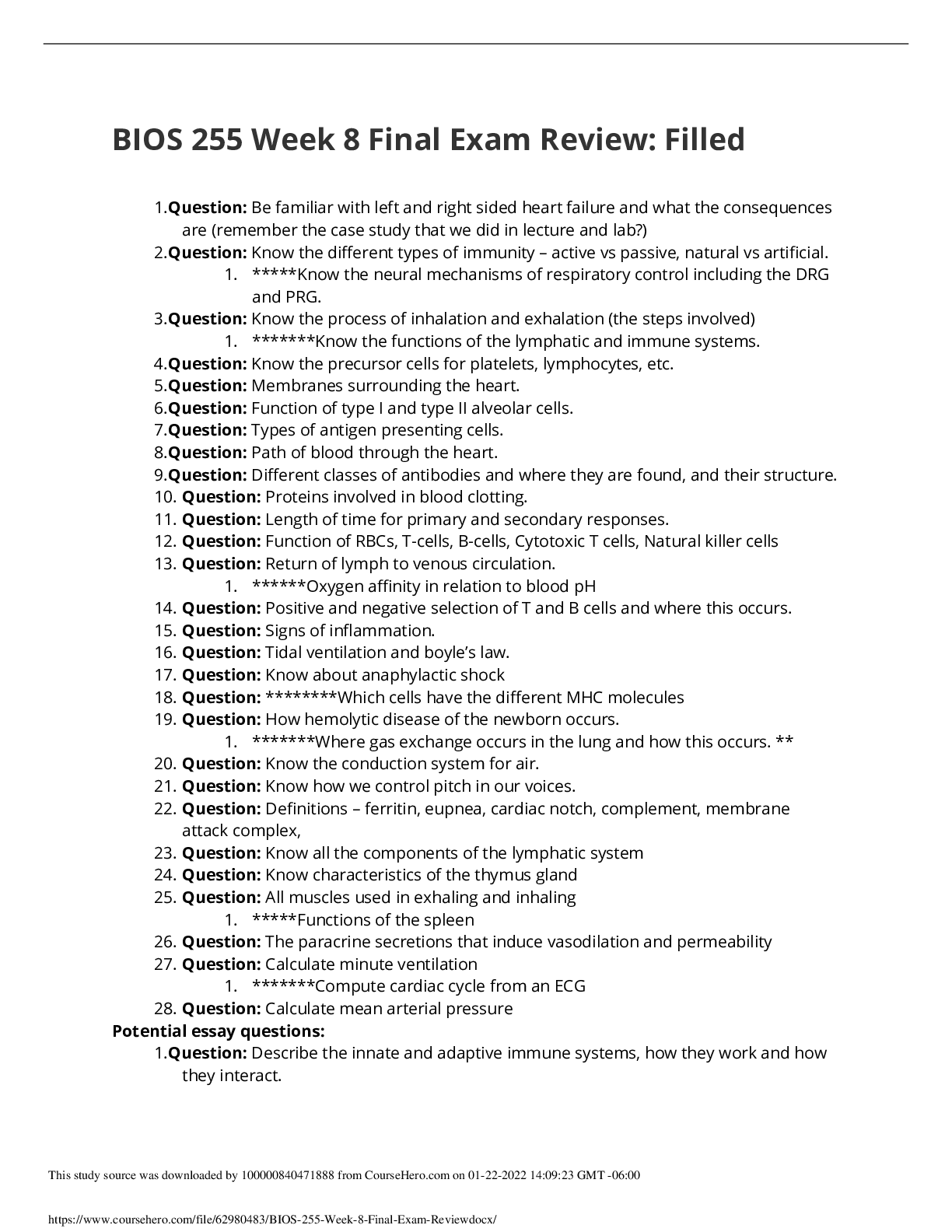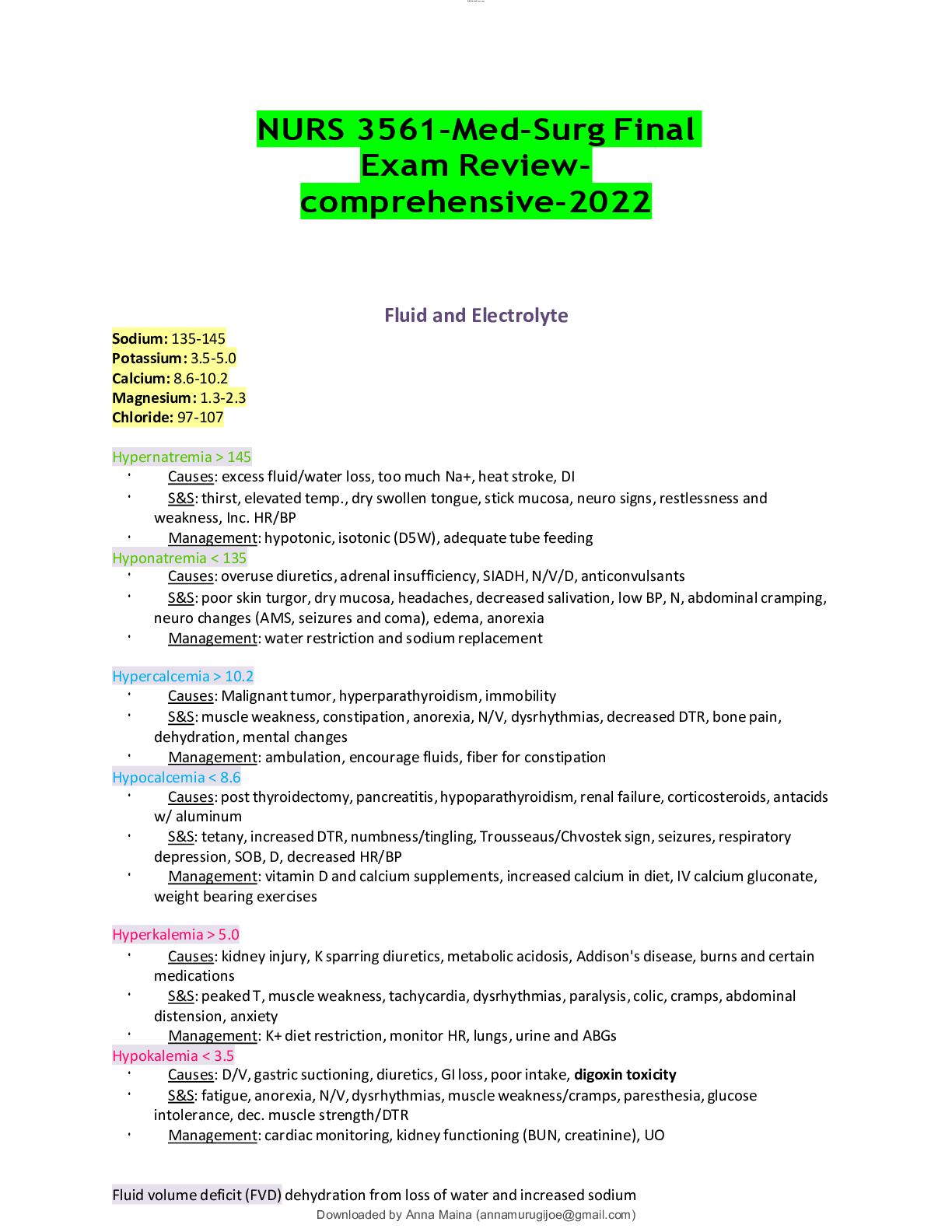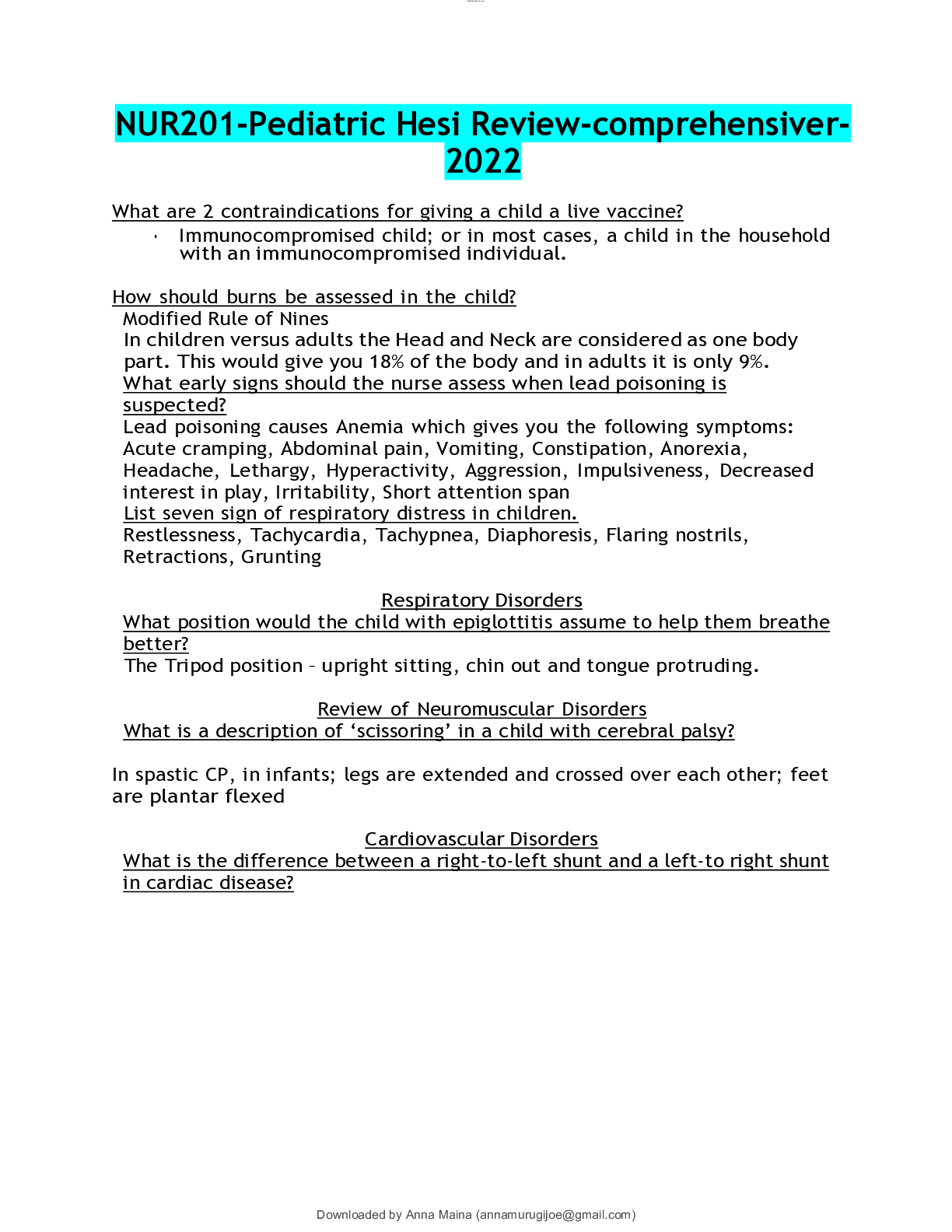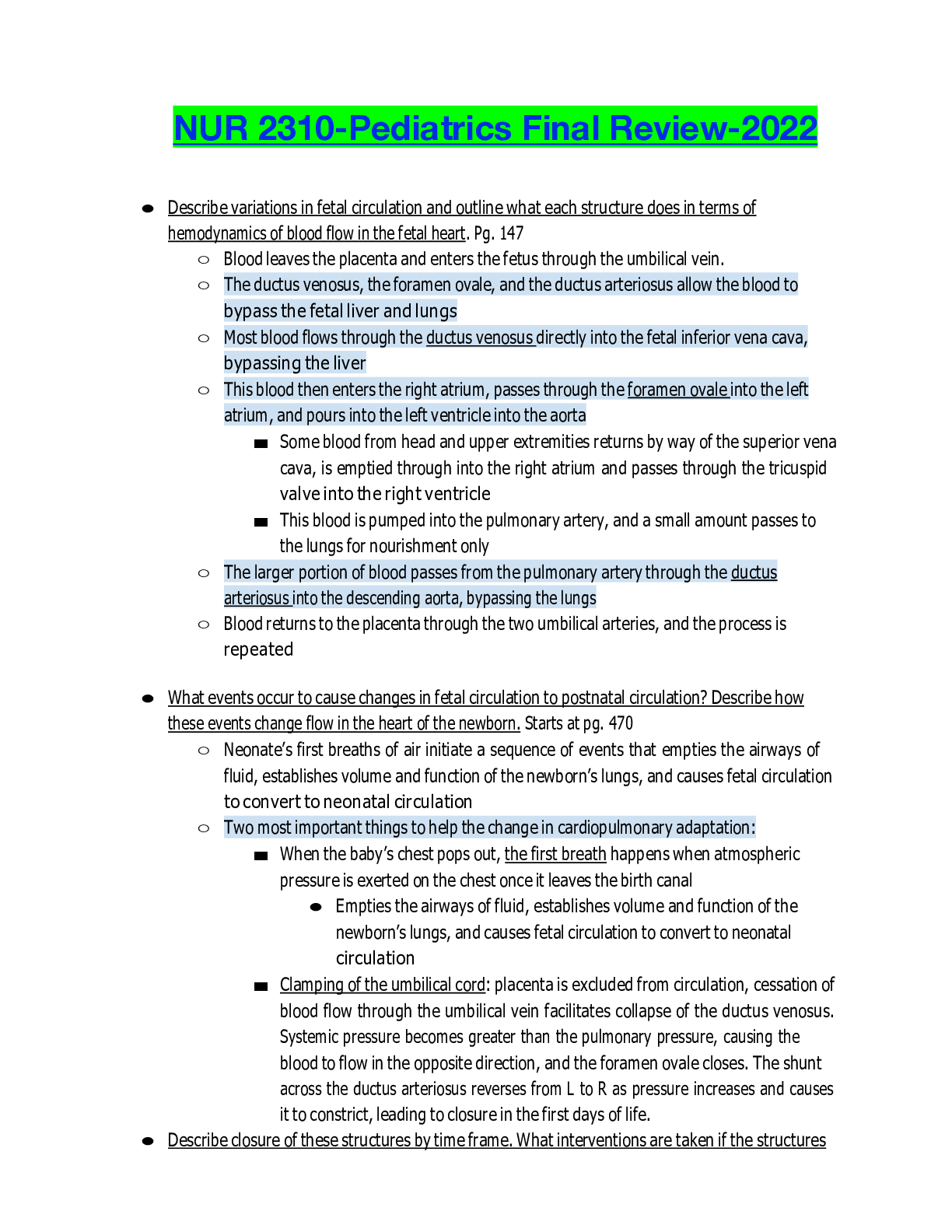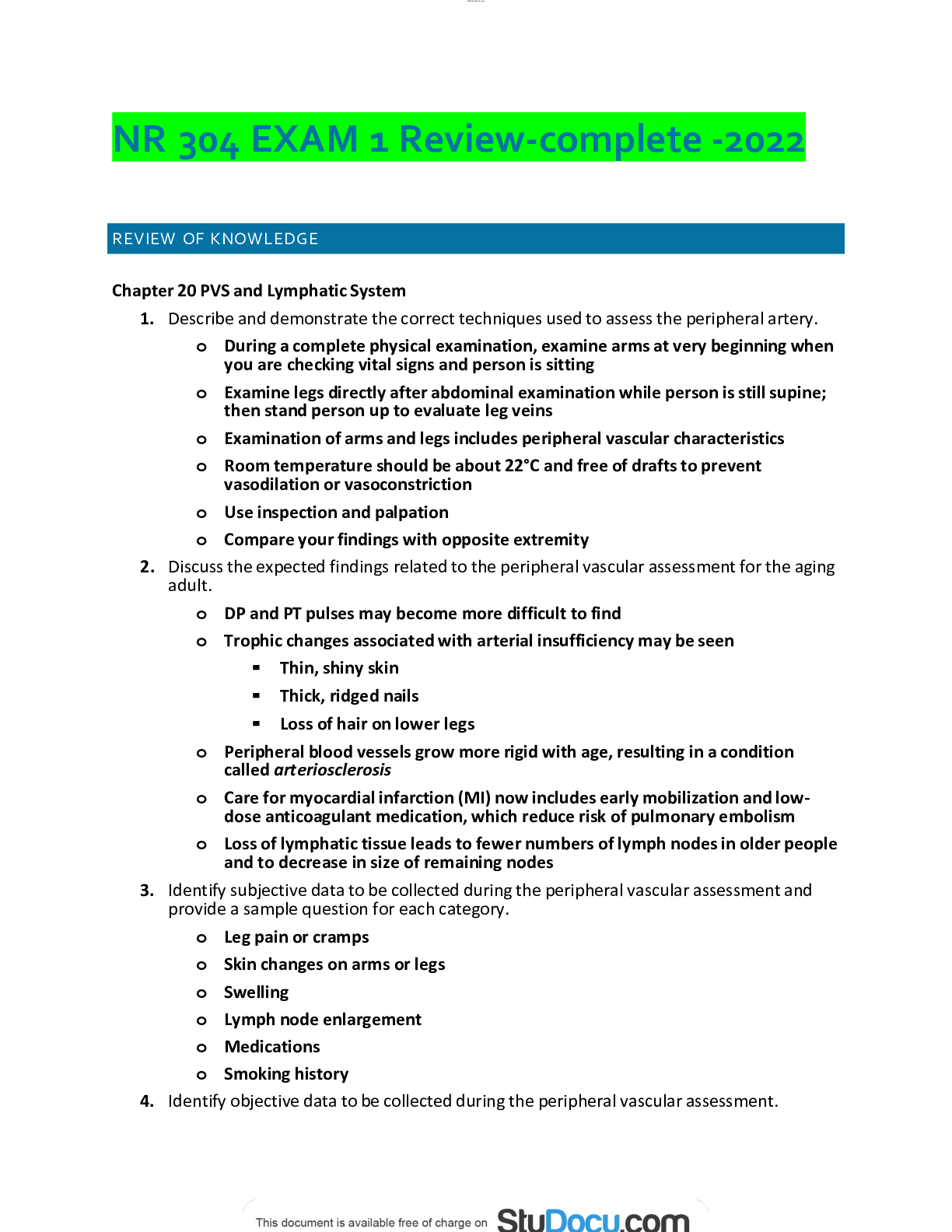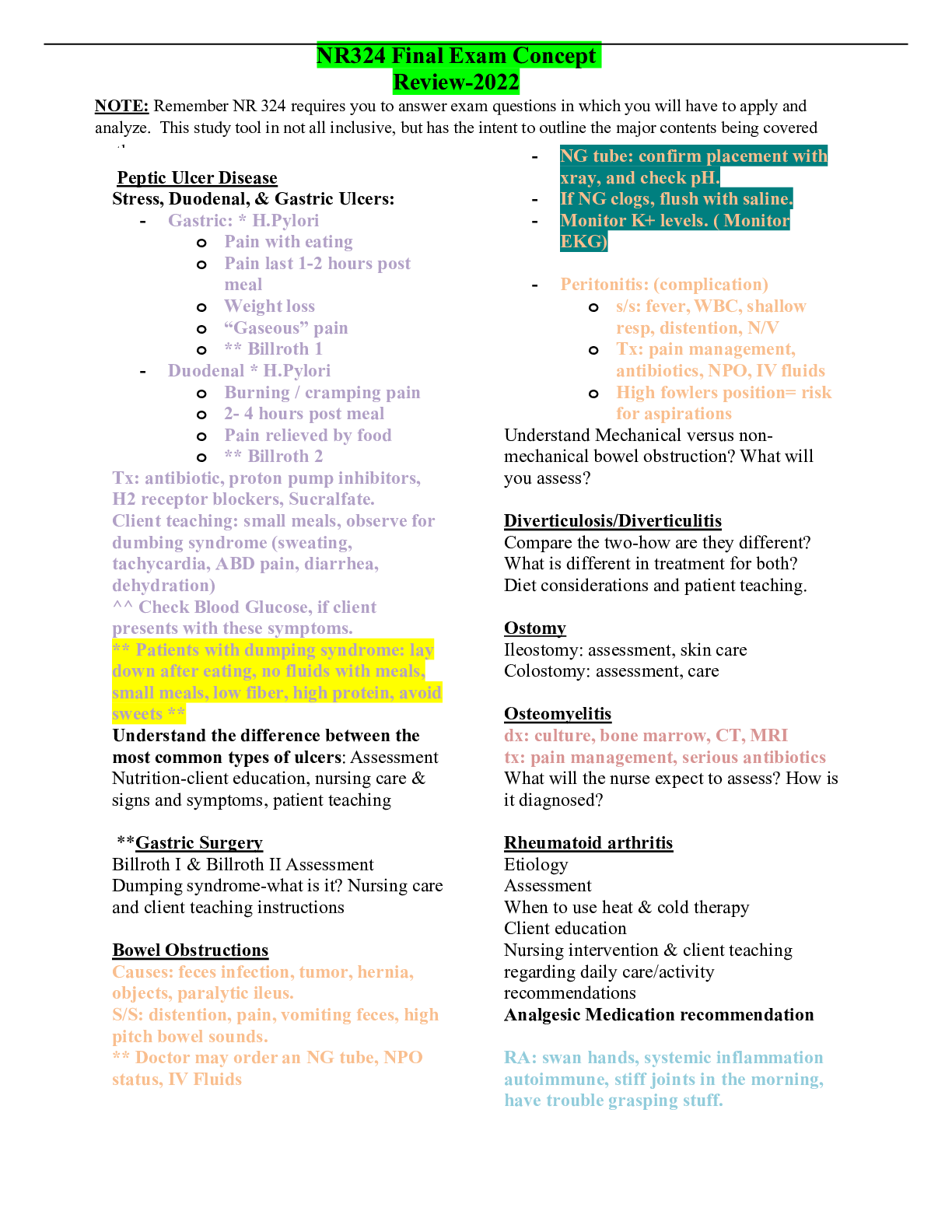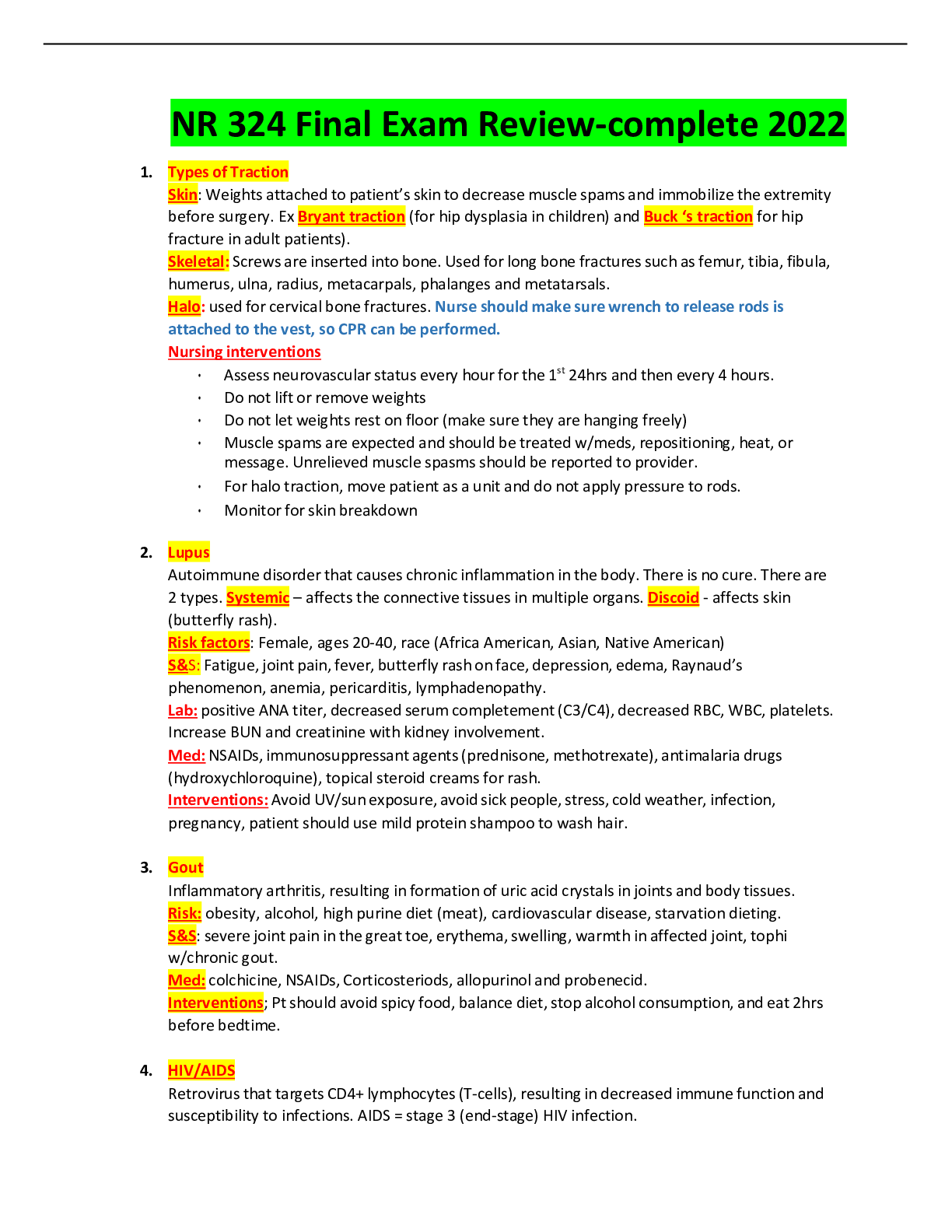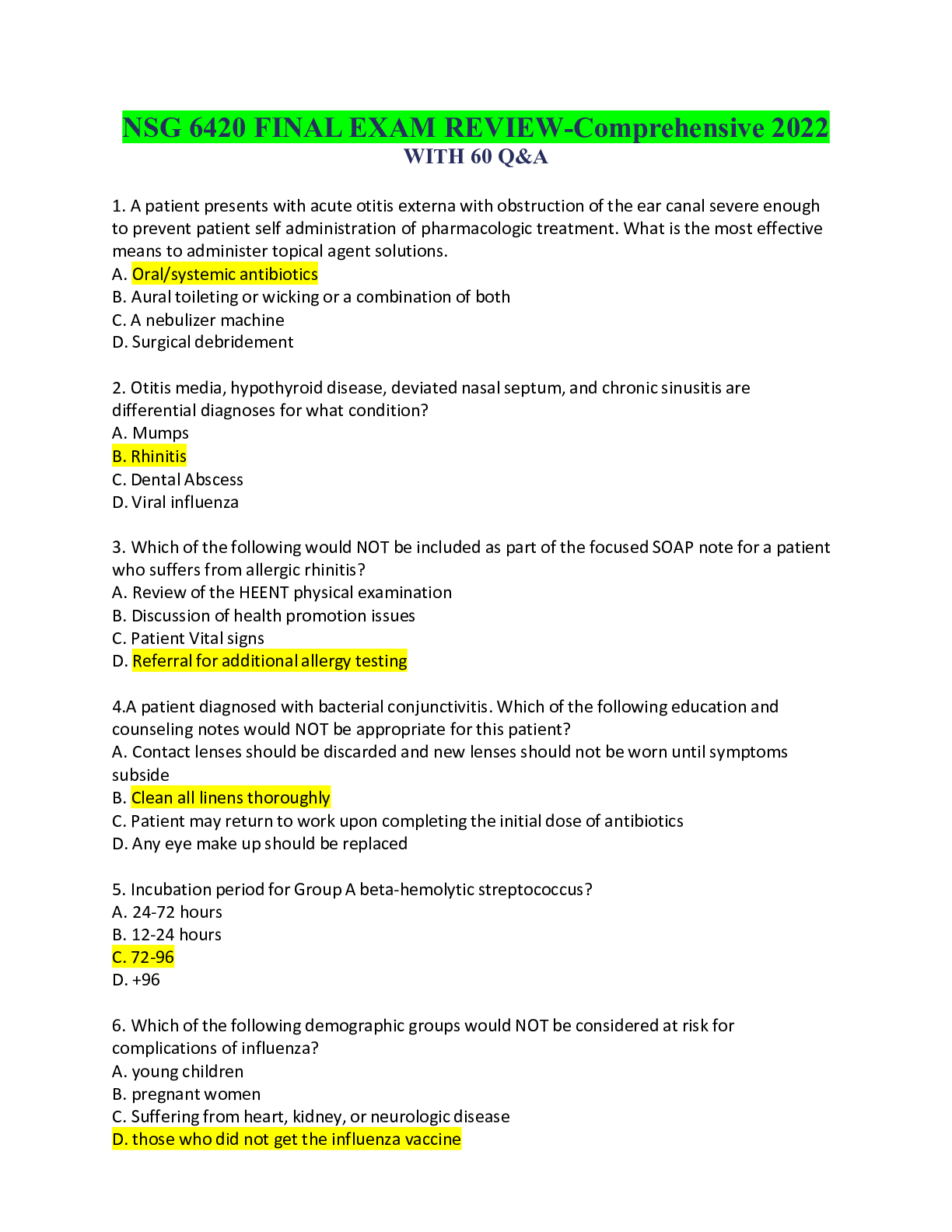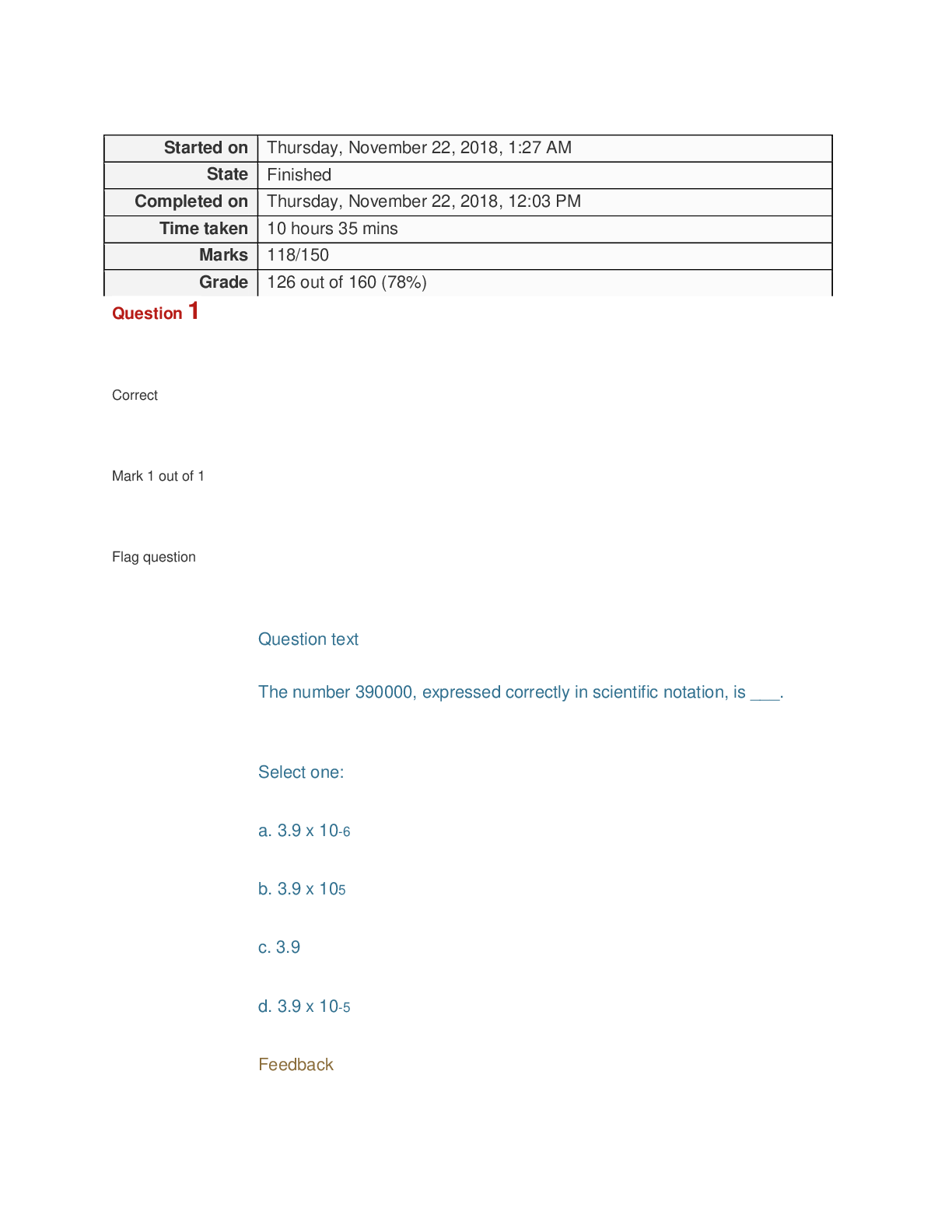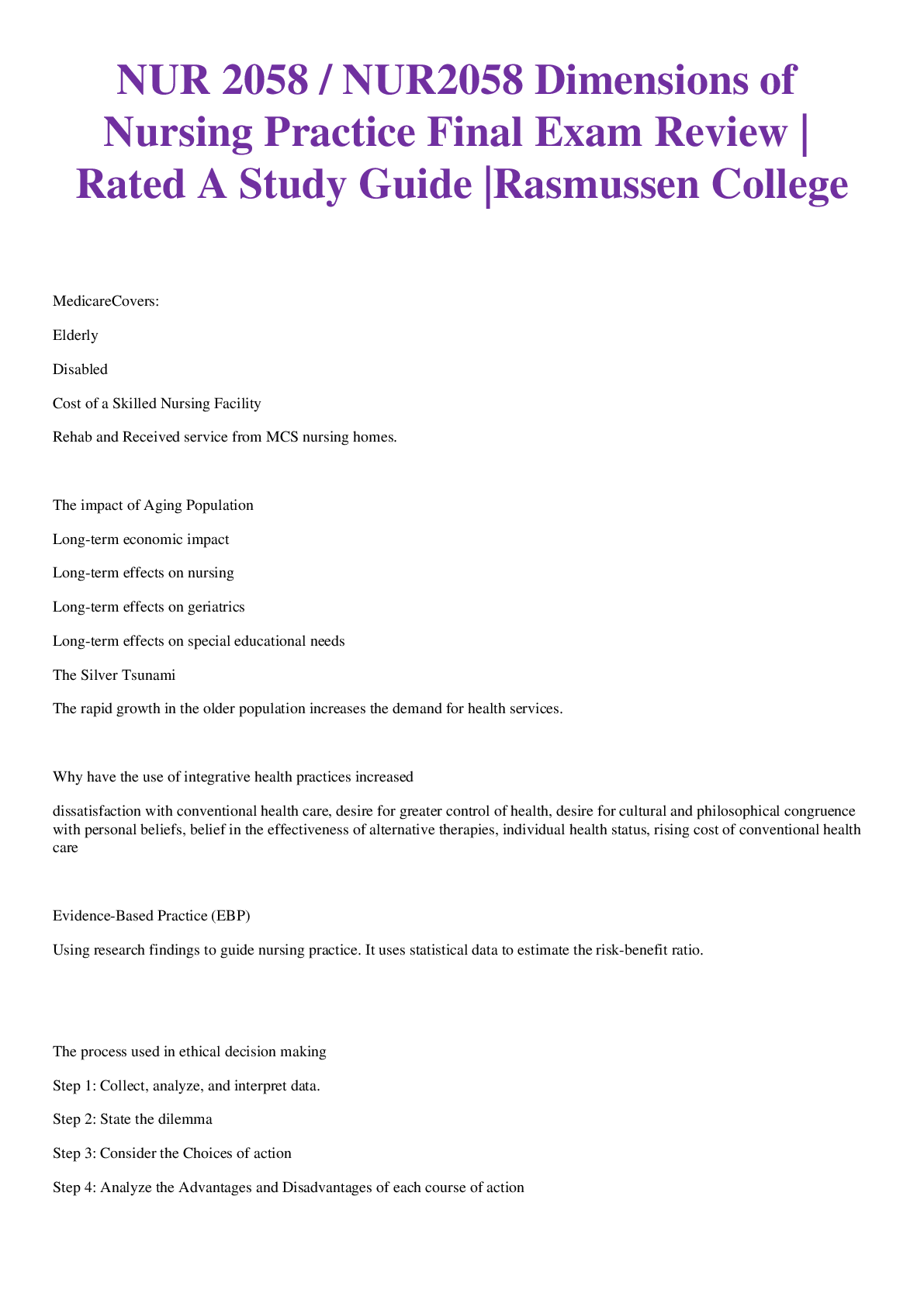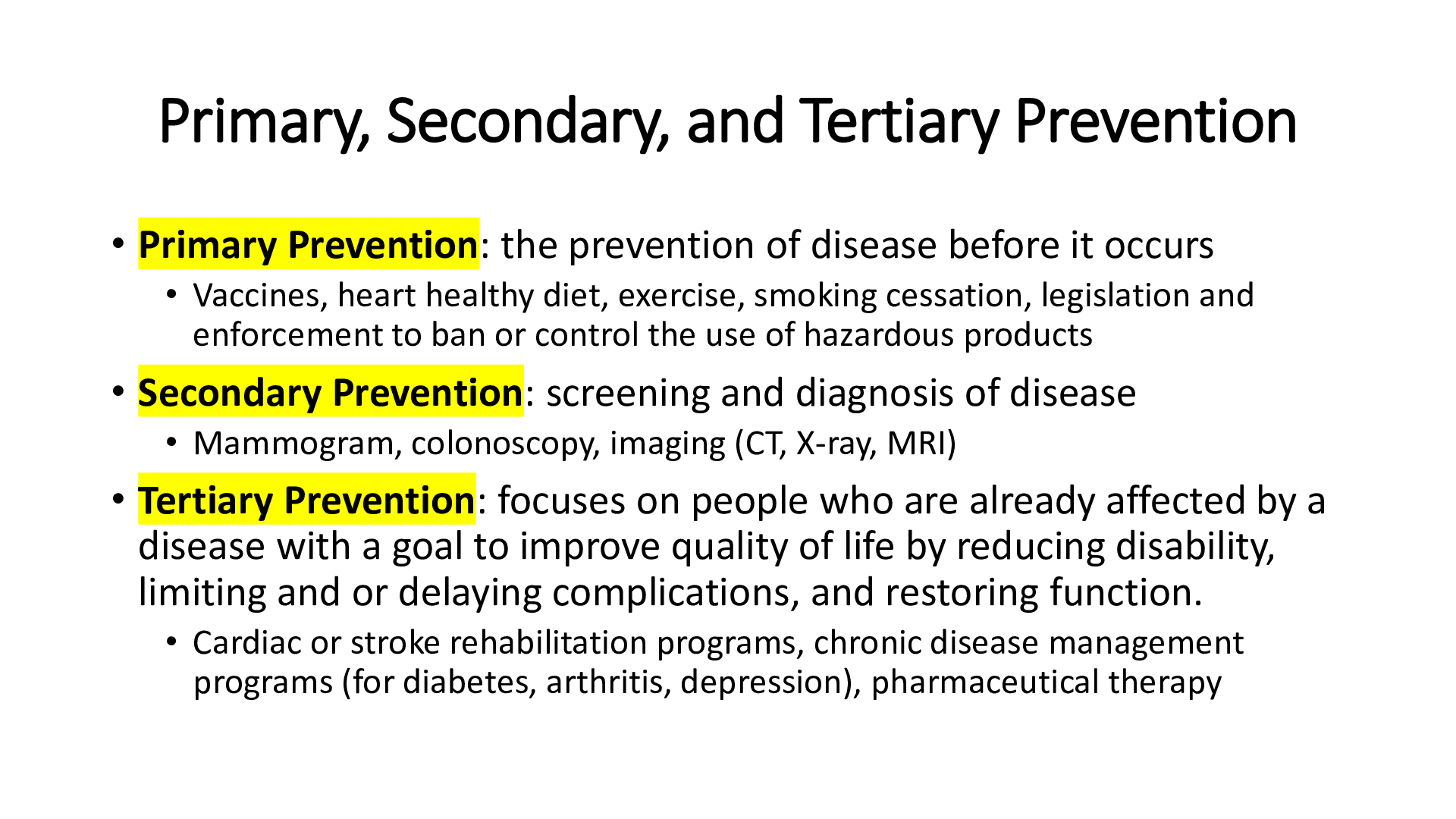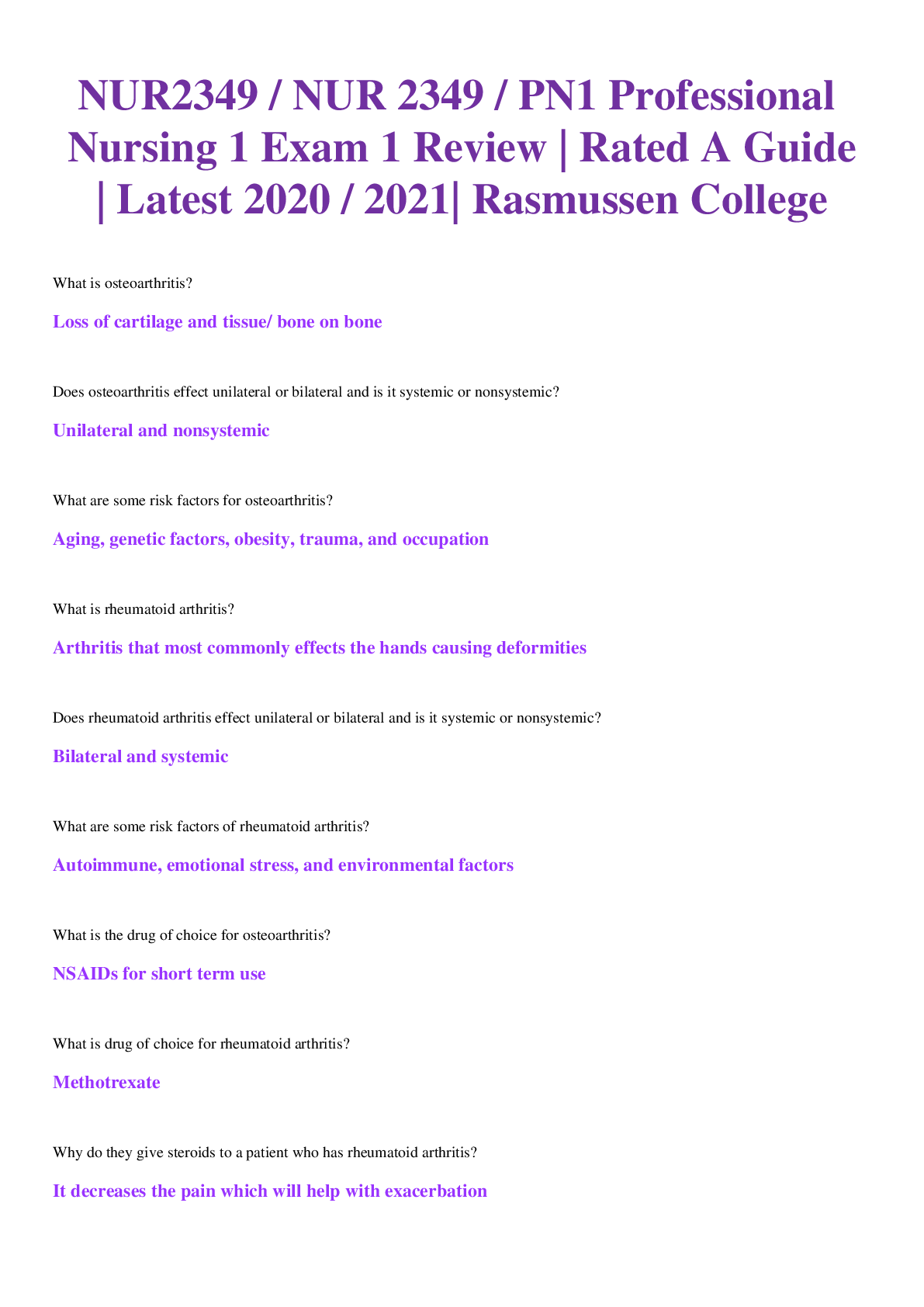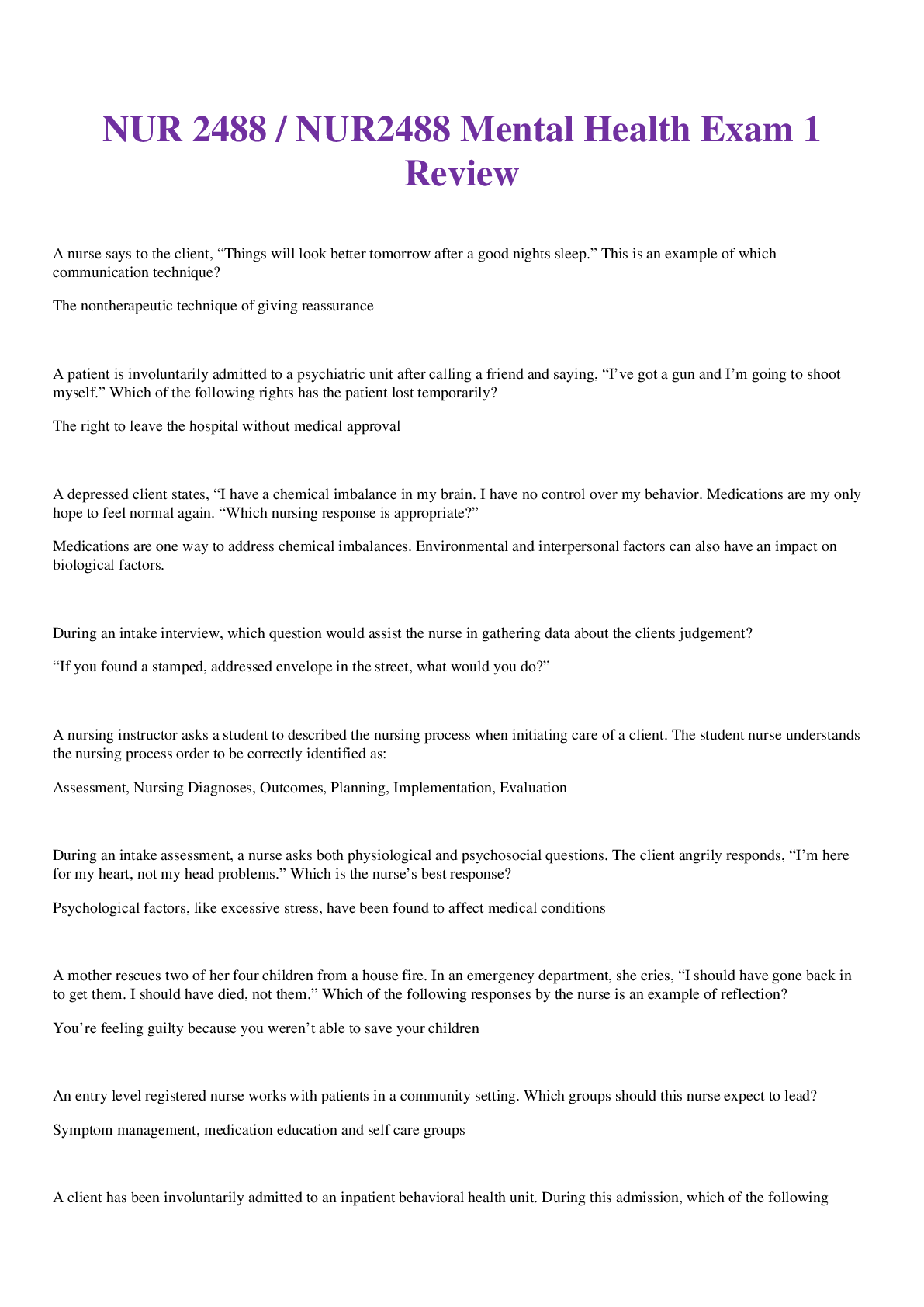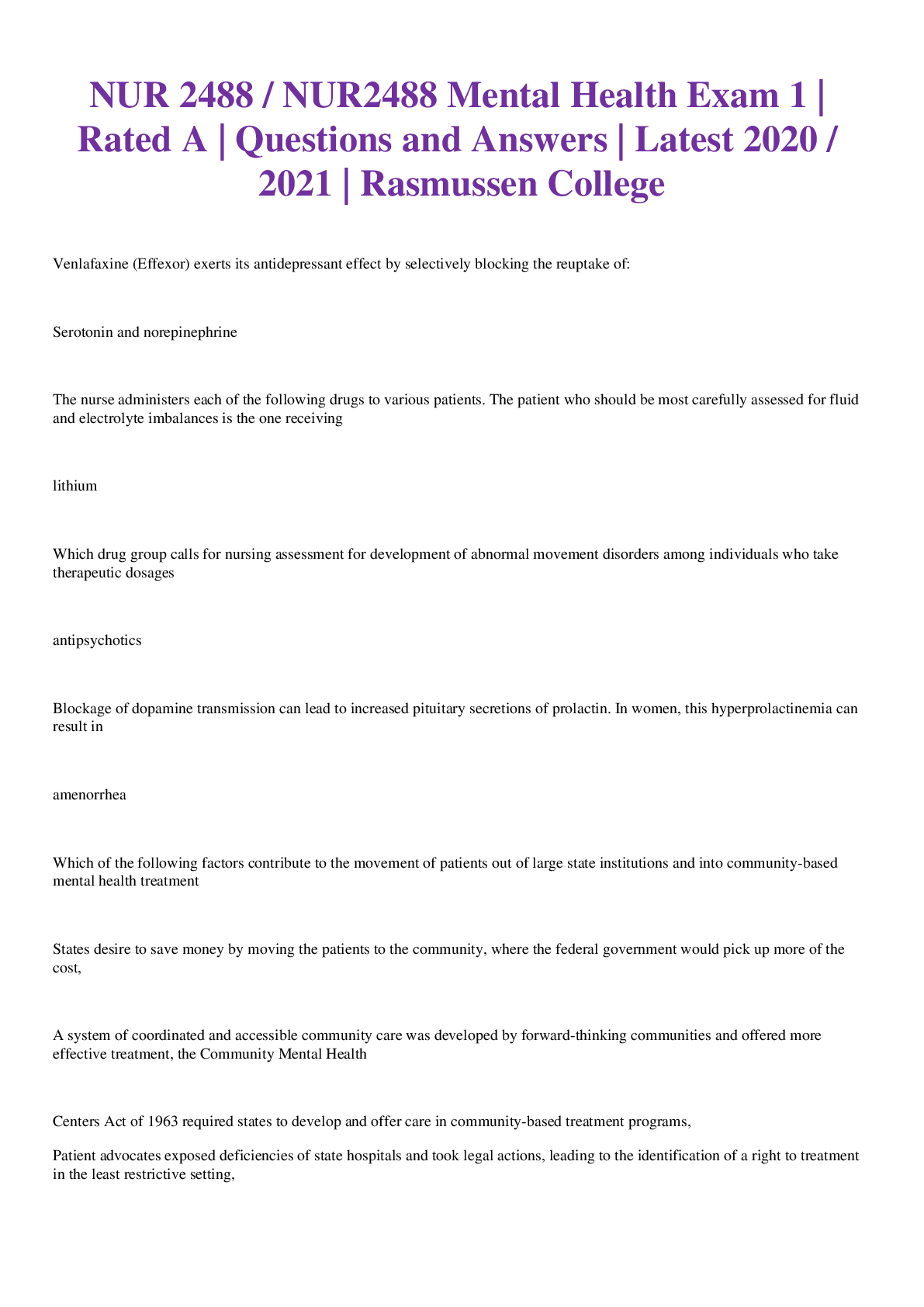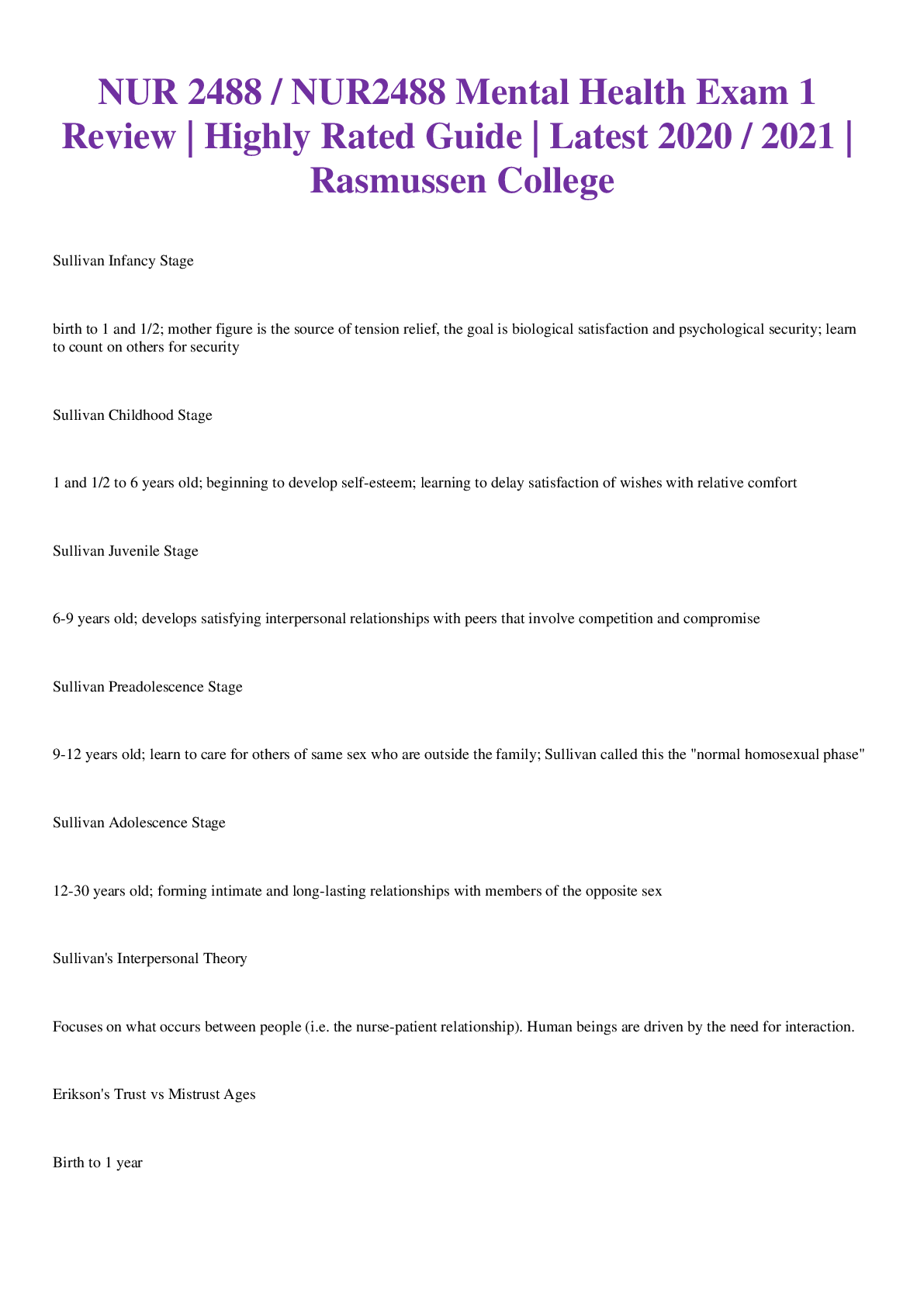*NURSING > EXAM REVIEW > NR 302 Week 2 Practice Quiz-Exam 1 Review Content (All)
NR 302 Week 2 Practice Quiz-Exam 1 Review Content
Document Content and Description Below
Question: After completing an initial assessment of a patient, the nurse has charted that his respirations are eupneic and his pulse is 58 beats per minute . What type of assessment data is this? Ques... tion: A patient tells the nurse that he is very nervous, nauseous, and “feels hot.” What type of assessment data is this? Question: The nurse is reviewing information about evidence-based practice (EBP). Which statement best reflects EBP? Question: The nurse is conducting a class on priority setting for a group of new graduate nurses. Which is an example of a first-level priority problem? Question: A newly admitted patient is in acute pain, has not been sleeping well lately, and is having difficulty breathing. How should the nurse prioritize these problems? Question: During an assessment, the nurse notices that a patient is handling a small charm that is tied to a leather strip around his neck. Which action by the nurse is appropriate? Question: The nurse manager is explaining culturally competent care during a staff meeting. Which statement accurately describes the concept of a culturally competent caregiver? Question: Which adjustment in the physical environment should the nurse make to promote the success of an interview? Question: The nurse asks, “I would like to ask you some questions about your health and your usual daily activities so that we can better plan your stay here.” Based on this question, the nurse is at which phase of the interview process? Question: During an interview, the nurse states, “You mentioned having shortness of breath. Tell me more about that.” Which verbal skill is used with this statement? Question: A woman is discussing the problems she is having with her 2-year- old son. She says, “He won’t go to sleep at night, and during the day he has several fits. I get so upset when that happens.” Which is the best response by the nurse to gain a better understanding of the problem? Question: A pregnant woman states, “I just know labor will be so painful that I won’t be able to stand it. I know it sounds awful, but I really dread going into labor.” The nurse responds by stating, “Oh, don’t worry about labor so much. I have been through it, and although it is painful, many good medications are available to decrease the pain.” Which statement is true regarding the nurse’s response? Question: The nurse is preparing to conduct a health history. Which of these statements best describes the purpose of a health history? Question: A woman brings her husband to the clinic for an examination. She is particularly worried because after a recent fall, he seems to have lost a great deal of his memory of recent events. Which statement reflects the nurse’s best course of action? Question: A 20-year-old construction worker has been brought into the emergency department with heat stroke. He has delirium as a result of a fluid and electrolyte imbalance. When conducting the mental status examination for this patient, what should the nurse assess first? Question: When performing a physical assessment, what technique should the nurse always perform first? Question: The nurse is assessing a patient’s skin during an office visit. What part of the hand and technique should be used to best assess the patient’s skin temperature? Question: Which of these techniques uses the sense of touch to assess texture, temperature, moisture, and swelling when the nurse is assessing a patient? Question: The nurse is preparing to percuss the abdomen of a patient. What characteristic of the underlying tissue does percussion assess? Question: The nurse is preparing to use a stethoscope for auscultation. Which statement is true regarding the diaphragm of the stethoscope? Question: The nurse will use which technique of assessment to determine the presence of crepitus, swelling, and pulsations? Question: The nurse is unable to palpate the right radial pulse on a patient. What should the nurse do next? Question: The nurse is preparing to examine a 4-year-old child. Which action by the nurse is appropriate for this age group? Question: Which of these statements is true regarding the use of Standard Precautions in the health care setting? Question: When examining an infant, the nurse should examine which area first? Question: While auscultating heart sounds, the nurse hears a murmur. Which of these instruments should be used to assess this murmur? Question: The nurse is performing a general survey. Which action is a component of the general survey? Question: The nurse is assessing an 80-year-old male patient. Which assessment findings would be considered normal? Question: The nurse is performing a general survey of a patient. Which finding is considered normal? Question: Which of these specific measurements is the best index of a child’s general health? Question: The nurse should measure rectal temperatures in which of these patients? Question: Which technique is correct when the nurse is assessing the radial pulse of a patient? Question: The nurse is assessing the vital signs of a 3-year-old patient who appears to have an irregular respiratory pattern. How should the nurse assess this child’s respirations? Question: A patient’s blood pressure is 118/82 mm Hg. He asks the nurse, “What do the numbers mean?” Which is the best reply by the nurse? Question: While measuring a patient’s blood pressure, the nurse should recall that which is a factor that influences a patient’s blood pressure? Question: The nurse notices that a colleague is preparing to check the blood pressure of a patient who is obese by using a standard-sized blood pressure cuff. How would this likely affect the blood pressure reading? Question: The nurse has collected the following information on a patient: palpated blood pressure–180 mm Hg; auscultated blood pressure– 170/100 mm Hg; apical pulse–60 beats per minute; radial pulse–70 beats per minute. What is the patient’s pulse pressure? Question: When auscultating the blood pressure of a 25-year-old patient, the nurse notices that the phase I Korotkoff sounds begin at 200 mm Hg. At 100 mm Hg, the Korotkoff sounds muffle. At 92 mm Hg, the Korotkoff sounds disappear. How should the nurse record this patient’s blood pressure? Question: The nurse is preparing to measure the vital signs of a 6-month-old infant. Which action by the nurse is correct? Question: The nurse is conducting a health fair for older adults. Which statement is true regarding vital sign measurements in aging adults? Question: The nurse is counting an infant’s respirations. Which technique is correct? Question: The nurse is evaluating a patient’s pain. Which is an example of acute pain? Question: A 4-year-old boy is brought to the emergency department by his mother. She says he points to his stomach and says, “It hurts so bad.” Which pain assessment tool would be the best choice when assessing this child’s pain? Question: The nurse is assessing a patient’s pain. What should the nurse know is the most reliable indicator of pain? Question: When assessing the quality of a patient’s pain, the nurse should ask which question? Question: When assessing the intensity of a patient’s pain, which question by the nurse is appropriate? Question: The nurse recognizes which of these people is at greatest risk for undernutrition? Question: For the first time, the nurse is seeing a patient who has no history of nutrition-related problems. Which activity should the initial nutritional screening include? Question: In performing an assessment on a 49-year-old woman who has imbalanced nutrition as a result of dysphagia, which data would the nurse expect to find? Question: An older adult patient in a nursing home has been receiving tube feedings for several months. During an oral examination, the nurse notes that patient’s gums are swollen, ulcerated, and bleeding in some areas. The nurse suspects that the patient has what condition? [Show More]
Last updated: 7 months ago
Preview 1 out of 28 pages
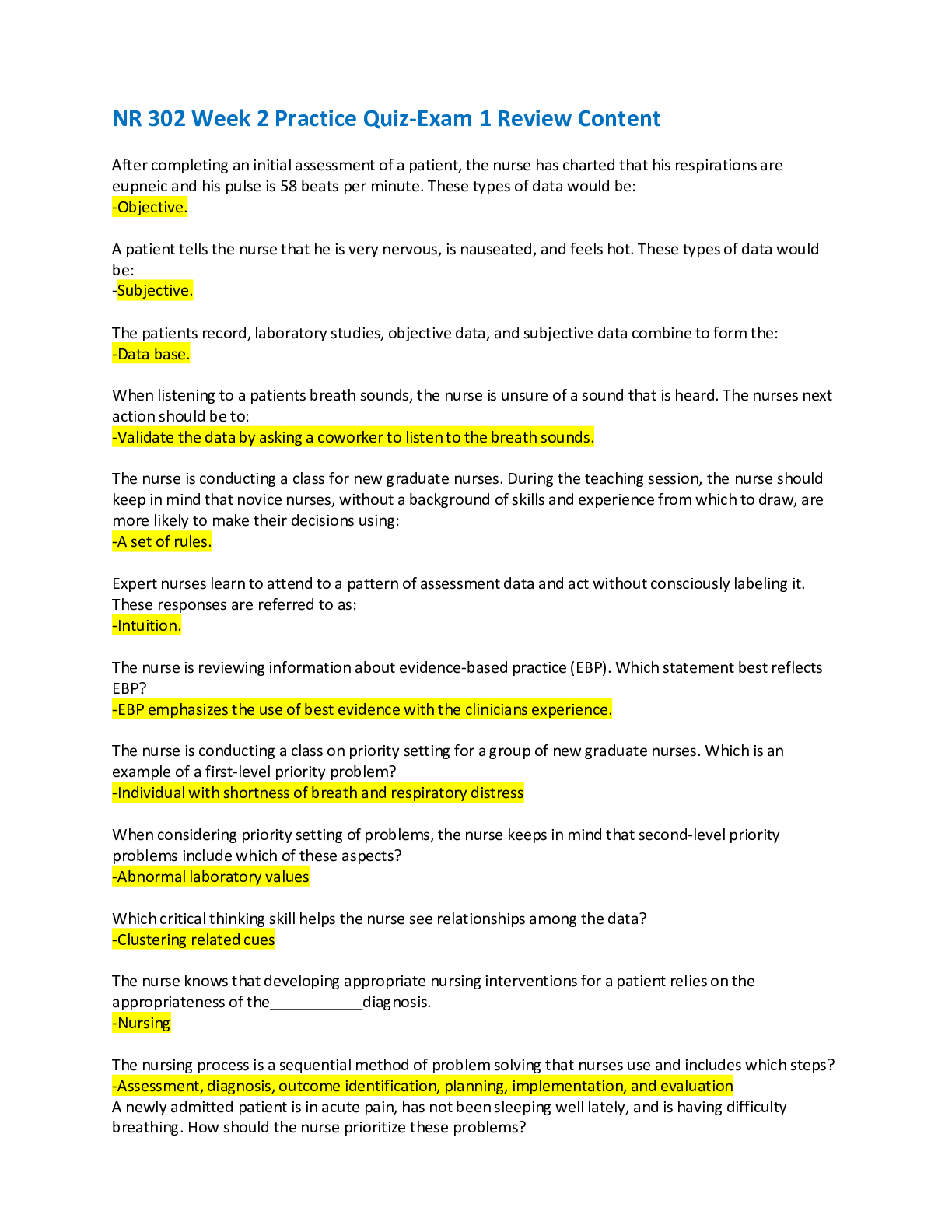
Reviews( 0 )
Document information
Connected school, study & course
About the document
Uploaded On
Feb 01, 2022
Number of pages
28
Written in
Additional information
This document has been written for:
Uploaded
Feb 01, 2022
Downloads
0
Views
59


